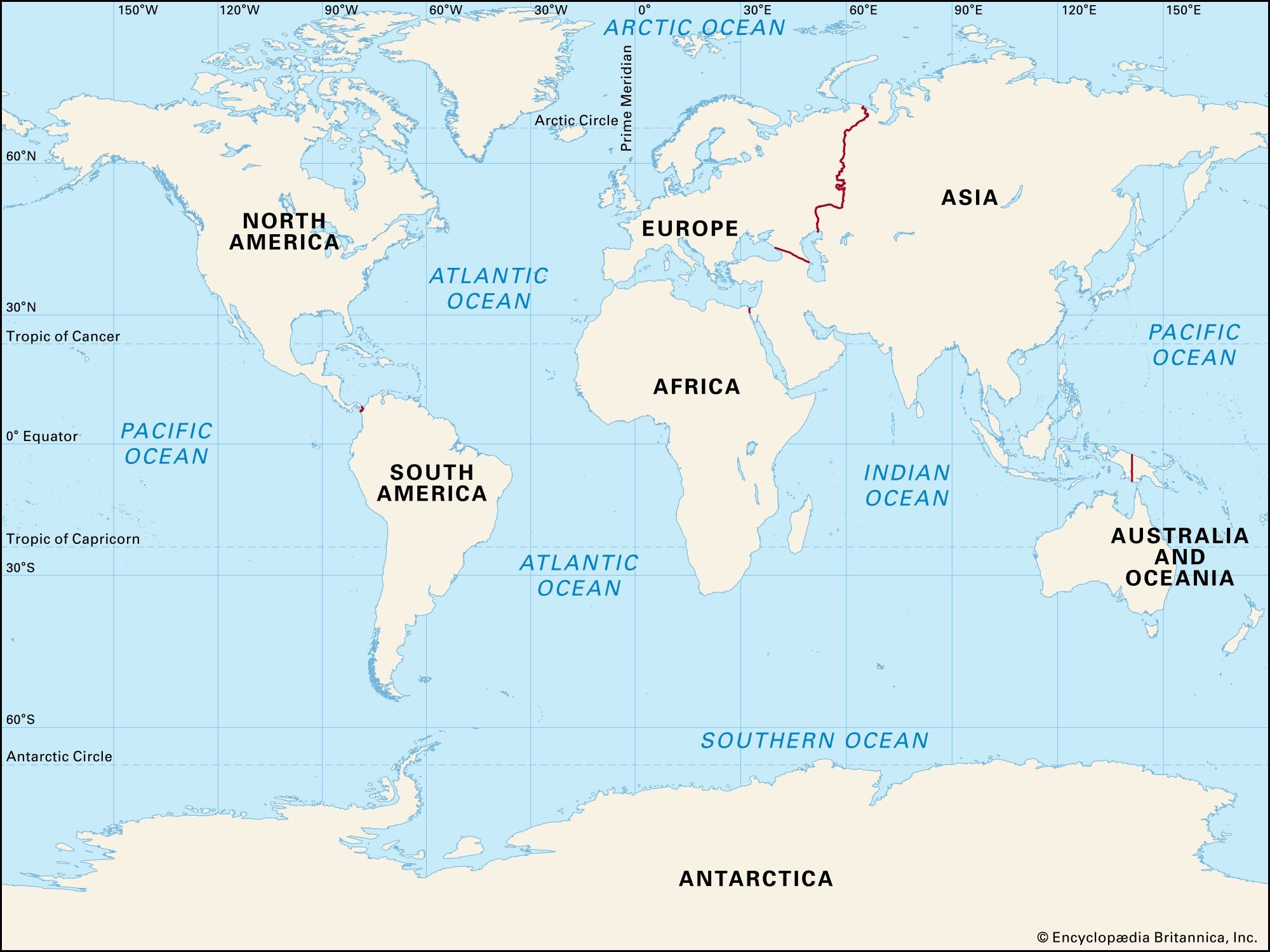Earth is often called the “water planet,” and for good reason. Approximately 71% of our planet’s surface is submerged beneath saltwater oceans. While planets like Europa and Enceladus also have ice, Earth stands out in our solar system as a true water world. Beyond the vast oceans, continents are dotted with lakes, rivers, and seas. But when we talk about the largest bodies of water, the oceans, a fundamental question arises: How Many Oceans Are There?
Historically, a four-ocean model has been prevalent in maps and educational materials. This traditional view identifies four distinct oceans: the Pacific Ocean, the Atlantic Ocean, the Indian Ocean, and the Arctic Ocean. Among these, the first three are typically considered the major oceans, while the Arctic Ocean often receives less attention. This could be attributed to its smaller size, its location at the edge of many world maps, and its characteristic ice cover.
 World map illustrating the five recognized oceans: Pacific, Atlantic, Indian, Arctic, and Southern Ocean, alongside the continents, emphasizing the interconnectedness of global waters in discussions about ocean count.
World map illustrating the five recognized oceans: Pacific, Atlantic, Indian, Arctic, and Southern Ocean, alongside the continents, emphasizing the interconnectedness of global waters in discussions about ocean count.
However, the answer to “how many oceans are there” isn’t always straightforward and depends on the perspective adopted. Many scientific organizations, including the International Hydrographic Organization (IHO), along with numerous national governments, recognize a fifth ocean: the Southern Ocean. Also known as the Antarctic Ocean, the Southern Ocean encompasses the waters encircling Antarctica, south of 60° S latitude. Although formal borders are still debated among IHO member countries, the recognition of the Southern Ocean as distinct from the Atlantic, Pacific, and Indian Oceans is increasingly accepted. This separation is supported by natural oceanographic features like the Antarctic Circumpolar Current and prevailing winds. These elements create the Antarctic Convergence, a zone that effectively isolates Antarctica, oceanographically and meteorologically, from the rest of the world. The status of the Southern Ocean gained further prominence in June 2021 when the National Geographic Society officially recognized it as the fifth ocean, reinforcing its place in global understanding. Despite this growing recognition, universal agreement on the precise boundaries of the Southern Ocean remains a topic of ongoing discussion.
From a functional standpoint, it can be argued that there is ultimately only one global ocean. This is because all recognized oceans are interconnected, flowing into at least two others. The concept of a single, continuous global ocean is strongly supported by the phenomenon of thermohaline circulation. Also referred to as the Global Ocean Conveyor or the Great Ocean Conveyor Belt, thermohaline circulation is a system of deep ocean currents driven by differences in water density, which is controlled by temperature (thermo) and salinity (haline). This global circulation pattern constantly moves seawater through all the named oceans. It plays a vital role in the Earth’s climate system by continually replacing deep water with surface water and, conversely, bringing deep water to the surface in other regions.
In conclusion, while historical convention and some geographical models point to four oceans, the scientific community and many contemporary resources acknowledge five oceans with the inclusion of the Southern Ocean. However, the underlying reality of interconnectedness emphasizes the concept of a single, global ocean. Therefore, the answer to “how many oceans are there” depends largely on whether you’re considering historical models, current scientific consensus, or the functional unity of Earth’s interconnected waters.
